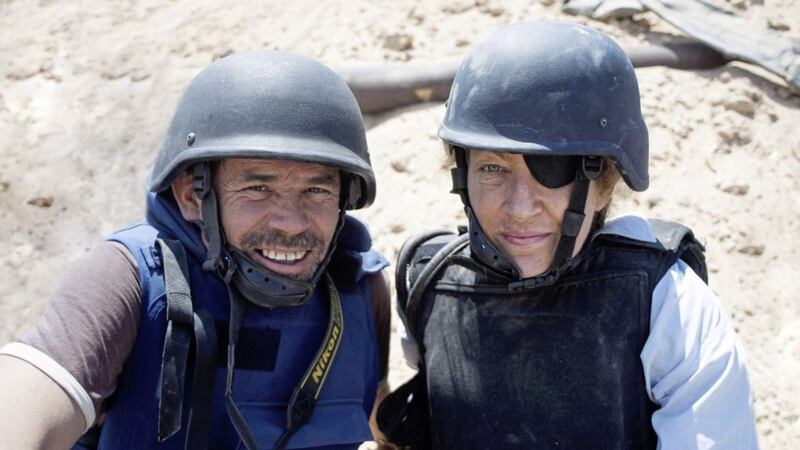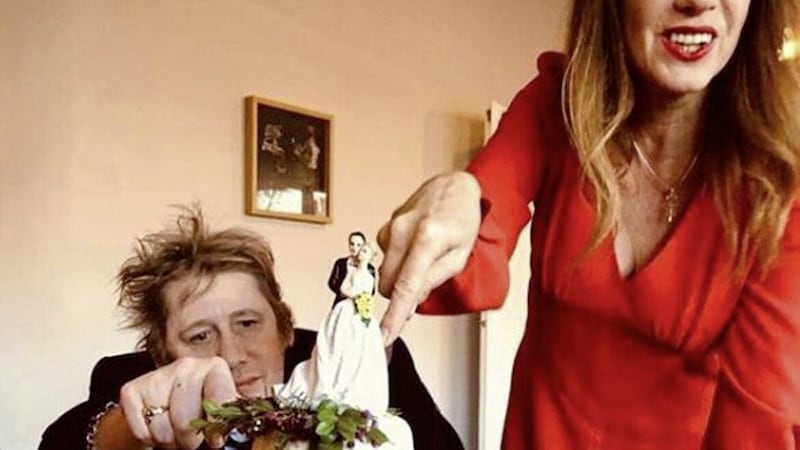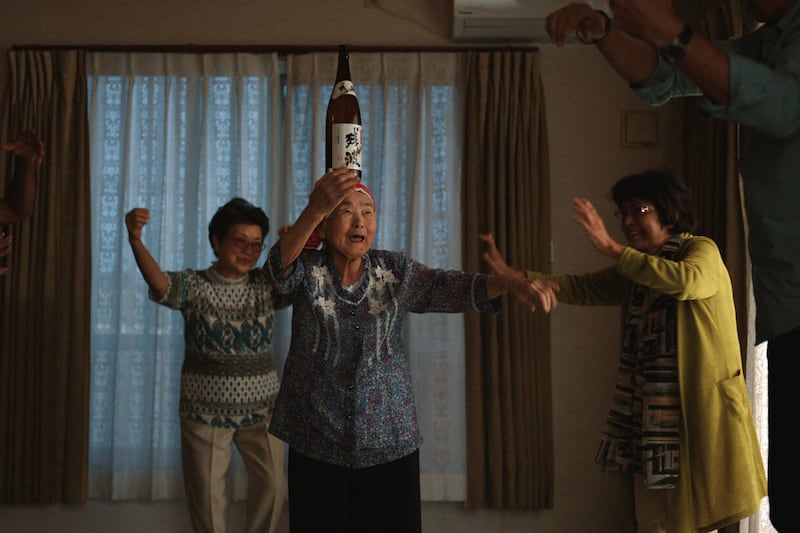Storyville, Under The Wire, BBC 4, Monday at 10pm
JOURNALISM may have changed utterly in the last decade, but there's one thing that the digital world and social media haven't altered - sometimes you have to put your head in where it hurts.
War correspondent Marie Colvin specialised in going to places other reporters feared to tread.
She had lost an eye after being shelled in Sri Lanka but her belief that journalism matters meant she kept going.
Syria was and remains an extremely difficult conflict to cover as a reporter. Not only is there the normal fear of death or abduction, but extreme Islamic groups were beheading foreign correspondents.
Nonetheless, Colvin and her photographer colleague, Paul Conroy, felt they had to tell how the Syrian regime was indiscriminately killing civilians in Homs, the seat of the Syrian revolution.
Under The Wire is the story of how the pair twice smuggled themselves into the Homs suburb of Baba Amr and exposed to the world the most horrific murder of civilians from the air.
While it deals with the killing of Colvin, Under the Wire is really the tale of Conroy's almost superhuman efforts to survive and escape after he is badly injured in the same rocket strike which killed his more famous colleague.
The tale beings in February 2012 in Beirut when the Sunday Times journalists decide to get into Homs.
Conroy tells of their fear when they are delivered at the mouth of a storm drain at the edge of the city and told to shuffle their way to Bara Amr.
On the other side they met the man from the resistance 'media centre' who would become their translator and close friend. Wa'el, who is also central in the film, began by explaining to the journalists that he was a bit unusual in Syria - he was a vegetarian and an atheist.
After filing their first Sunday Times report of life under constant bombardment from the Assad regime, the pair left Homs amid reports that a ground invasion was imminent.
There was opposition in London, but they went back through the tunnel regardless and as Conroy said with a smile, "It's better to say sorry than to ask for permission."
In a desperate attempt to create enough world attention to protect the residents, Colvin did a series of live broadcast interviews from Baba Amr and it appears to have sealed her fate.
The following day shells started landing very close to their house, and Conroy, who had worked in artillery in the British army in a previous life, noted how the gunners where "bracketing" their target and "walking the shells in".
When the fatal shell hit, Colvin and French photojournalist Remi Ochlik were killed immediately while Conroy and another French reporter, Edith Bouvier, were badly injured.
Then, in a most extraordinary series of events, Conroy and Bouvier are treated by local doctors but without any equipment or drugs.
At one stage, the Syrian Red Crescent turn up with an ambulance offering to take the pair of safety but the locals warn that they are not to be trusted and when Conroy asks to speak to the government official in charge he whispers to the Englishman: "Do not get in the ambulance."
Days later the rebels, desperate to save the people who had come to tell the world of their plight, put them in cars and drove at high speed out of the city while they Syrian army opened up.
Conroy recalls his fear but also relief.
"At least it's not going to be (death) in that shithole little room, at least we are going to go out trying."
With fist size shrapnel holes in his leg he is finally brought back to the storm drain, but half way through he is blocked by earth and he has to dig himself to freedom.
A most extraordinary and important film.








